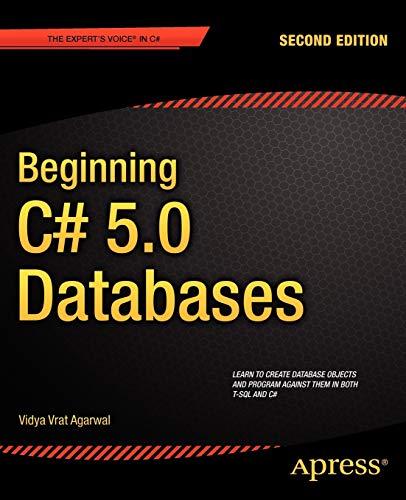Question
Write a function that starts with a single linked list of items and a special value called thesplitting value. Two item values can be compared
Write a function that starts with a single linked list of items and a special value called thesplitting value. Two item values can be compared using the < operatorbut the items of the original linked list are in no particular order. The procedure divides the nodes into two linked lists: one containing all the nodes that contain an item less than the splitting value, and one that contains all the other nodes. If the original linked list had any repeated integers (i.e., any two or more nodes with the same item in them) then the new linked list that has this item should have the same number of nodes that repeat this item. It does not matter whether you preserve the original linked list or destroy it in the process of building the two new lists, but your comments should document what happens to the original linked list.
// FILE: node1.cxx // IMPLEMENTS: The functions of the node class and the // linked list toolkit (see node1.h for documentation). // INVARIANT for the node class: // The data of a node is stored in data_field, and the link in link_field. #include "node1.h" #include// Provides assert #include // Provides NULL and size_t using namespace std; namespace main_savitch_5 { size_t list_length(const node *head_ptr) // Library facilities used: cstdlib { const node *cursor; size_t answer; answer = 0; for (cursor = head_ptr; cursor != NULL; cursor = cursor->link()) ++answer; return answer; } void list_head_insert(node *&head_ptr, const node::value_type &entry) { head_ptr = new node(entry, head_ptr); } void list_insert(node *previous_ptr, const node::value_type &entry) { node *insert_ptr; insert_ptr = new node(entry, previous_ptr->link()); previous_ptr->set_link(insert_ptr); } node *list_search(node *head_ptr, const node::value_type &target) // Library facilities used: cstdlib { node *cursor; for (cursor = head_ptr; cursor != NULL; cursor = cursor->link()) if (target == cursor->data()) return cursor; return NULL; } const node *list_search(const node *head_ptr, const node::value_type &target) // Library facilities used: cstdlib { const node *cursor; for (cursor = head_ptr; cursor != NULL; cursor = cursor->link()) if (target == cursor->data()) return cursor; return NULL; } node *list_locate(node *head_ptr, size_t position) // Library facilities used: cassert, cstdlib { node *cursor; size_t i; assert (0 < position); cursor = head_ptr; for (i = 1; (i < position) && (cursor != NULL); i++) cursor = cursor->link(); return cursor; } const node *list_locate(const node *head_ptr, size_t position) // Library facilities used: cassert, cstdlib { const node *cursor; size_t i; assert (0 < position); cursor = head_ptr; for (i = 1; (i < position) && (cursor != NULL); i++) cursor = cursor->link(); return cursor; } void list_head_remove(node *&head_ptr) { node *remove_ptr; remove_ptr = head_ptr; head_ptr = head_ptr->link(); delete remove_ptr; } void list_remove(node *previous_ptr) { node *remove_ptr; remove_ptr = previous_ptr->link(); previous_ptr->set_link(remove_ptr->link()); delete remove_ptr; } void list_clear(node *&head_ptr) // Library facilities used: cstdlib { while (head_ptr != NULL) list_head_remove(head_ptr); } void list_copy(const node *source_ptr, node *&head_ptr, node *&tail_ptr) // Library facilities used: cstdlib { head_ptr = NULL; tail_ptr = NULL; // Handle the case of the empty list. if (source_ptr == NULL) return; // Make the head node for the newly created list, and put data in it. list_head_insert(head_ptr, source_ptr->data()); tail_ptr = head_ptr; // Copy the rest of the nodes one at a time, adding at the tail of new list. source_ptr = source_ptr->link(); while (source_ptr != NULL) { list_insert(tail_ptr, source_ptr->data()); tail_ptr = tail_ptr->link(); source_ptr = source_ptr->link(); } } }
C++
Node implentation file is given.
Step by Step Solution
There are 3 Steps involved in it
Step: 1

Get Instant Access to Expert-Tailored Solutions
See step-by-step solutions with expert insights and AI powered tools for academic success
Step: 2

Step: 3

Ace Your Homework with AI
Get the answers you need in no time with our AI-driven, step-by-step assistance
Get Started


